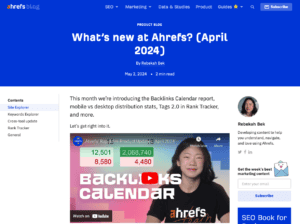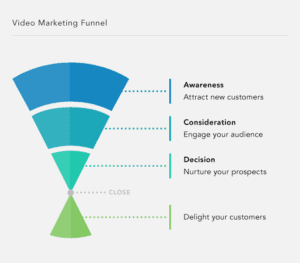Unlocking the Power of Video Analytics: A Complete Guide for Growth
Video analytics are essential for maximizing the potential of your video marketing strategy. These metrics give you valuable insights into how your audience interacts with your content, from view duration to engagement levels, allowing you to refine your approach and drive growth.
Leveraging the right video analytics tools can help businesses not only track performance but also improve ROI and boost user engagement.
Introduction: Why Video Analytics Matter
As video content becomes a key element in digital marketing, understanding its effectiveness is crucial for any business. Video analytics provide the data needed to evaluate what’s working, where you can improve, and how to optimize future content. Tracking metrics such as view count, engagement rate, and drop-off points helps businesses fine-tune their video marketing strategies for better results.
In this article, we’ll explore the importance of video analytics, the key metrics to track, and how using the right tools can help you scale your video marketing efforts.
Key Metrics to Track with Video Analytics
1. View Count
View count is a basic yet important metric. It shows how many times your video has been watched, giving you an idea of your content’s reach. However, it should be evaluated in conjunction with other metrics to determine true success, as views alone don’t reflect engagement or conversions.
2. Engagement Rate
Engagement rate measures how much of your video content viewers are watching and how they interact with it. This includes likes, comments, shares, and time spent on the video. A high engagement rate indicates that your content is resonating with your audience.
- Pro Tip: Encourage engagement by including clear calls to action (CTAs) within your video, such as asking viewers to like, share, or comment.
3. Play Rate
Play rate refers to the percentage of people who watched your video after seeing the thumbnail or preview. This metric gives you insight into how well your video is attracting attention. A low play rate might indicate that your thumbnail or title isn’t appealing enough.
4. Watch Time and Average View Duration
These metrics tell you how long people are staying engaged with your video. High watch time and average view duration suggest that your video content is holding the audience’s attention. Drop-offs often indicate parts of your video that may need improvement.
5. Click-Through Rate (CTR)
The CTR shows how effective your video is at driving users to take action, such as clicking a link or visiting your website. By analyzing CTR, you can determine whether your video’s CTA is clear and effective.
- Pro Tip: Incorporate strong CTAs near the beginning and end of your video to encourage action.
6. Conversion Rate
The conversion rate measures how many viewers took a desired action after watching your video, such as signing up for a newsletter or making a purchase. This is one of the most critical metrics for measuring the ROI of your video content.
7. Drop-Off Points
Drop-off points reveal where viewers lose interest and stop watching your video. Identifying these moments can help you pinpoint where your content loses relevance, allowing you to make adjustments and retain viewer attention.
How to Use Video Analytics to Improve Content Strategy
1. Tailor Content to Your Audience
By analyzing who is watching your videos and how they engage with them, you can tailor your content to better suit your audience’s preferences. Video analytics allow you to segment your audience by demographics, location, and device, giving you insights into what works best for different segments.
2. Optimize Videos for Maximum Engagement
If you notice viewers are dropping off at a specific point in your video, it may signal that the content is becoming less engaging. Use this data to restructure your video or add interactive elements that re-engage your audience.
3. Refine Your Marketing Funnel
Understanding which videos are driving the most conversions can help you refine your marketing funnel. Use high-converting video content to guide potential customers down the funnel, from awareness to purchase.
4. A/B Testing
Use video analytics to run A/B tests on different video elements, such as thumbnails, titles, and CTAs. Test which version performs better in terms of play rate, engagement, and conversion.
- Pro Tip: Tools like Wistia and Vidyard allow you to perform A/B testing easily to optimize your video content.
Top Tools for Video Analytics
Wistia
Wistia provides detailed video analytics, including heatmaps showing viewer engagement at every second of the video. It also offers A/B testing features, making it easy to optimize your video content for better performance.
Vimeo
Vimeo’s analytics dashboard offers metrics on view count, play rate, and geographic data. It also tracks viewer engagement, allowing you to see how users interact with your videos in real-time.
Vidyard
Vidyard is known for its powerful video marketing and analytics capabilities. It provides insights into viewer behavior, engagement, and interactions. Vidyard integrates with CRMs like HubSpot and Salesforce, making it ideal for businesses looking to tie video analytics directly to sales outcomes.
YouTube Analytics
YouTube offers a comprehensive set of video analytics tools for free. These include metrics such as average view duration, traffic sources, and audience demographics. While YouTube is great for reach, remember that traffic is directed to YouTube itself rather than your website.
Brightcove
Brightcove is a popular video hosting platform with an advanced analytics suite. It provides real-time insights into how your videos perform across different devices, regions, and traffic sources, helping you tailor your content for maximum impact.
Google Analytics with Video Integration
By integrating Google Analytics with your video hosting platform, you can track how video content affects overall site behavior. For example, you can see whether a video increases session duration or reduces bounce rate on a particular landing page.
How to Leverage Video Analytics for SEO
1. Improve Search Rankings with Engagement Data
Search engines prioritize content that keeps users engaged. Video analytics can help you optimize engagement metrics like watch time and CTR, which directly affect your video’s ranking on platforms like YouTube and Google.
2. Optimize Metadata for SEO
Use data from video analytics to refine your video titles, descriptions, and tags. Incorporating keywords that reflect actual viewer search behavior can help improve search rankings.
3. Create SEO-Driven Content
Analyze the keywords and search terms that drive traffic to your videos. Use this information to create SEO-driven video content that answers user queries and solves their problems, increasing visibility on search engines.
Conclusion: Harnessing the Power of Video Analytics
Video analytics provide a wealth of data that can help you fine-tune your video marketing strategy, improve viewer engagement, and increase conversions. By tracking key metrics like engagement rate, play rate, and conversion rate, businesses can create more targeted and effective video content. With the right tools and strategies, video analytics can unlock the full potential of your video marketing efforts and drive business growth.
FAQs
What are video analytics?
Video analytics are tools that track and measure various metrics related to how viewers interact with your video content. Metrics can include engagement rate, play rate, watch time, and conversion rate.
Why are video analytics important?
Video analytics provide insights into how effective your videos are at engaging viewers and driving conversions. This data helps businesses optimize their video marketing strategies for better results.
What is the difference between view count and engagement rate?
View count shows how many people have watched your video, while engagement rate measures how actively viewers interacted with it, such as by commenting, liking, or sharing.
How can I improve my video’s engagement rate?
To improve engagement rate, make your video content more interactive, include clear CTAs, and optimize the first few seconds of your video to capture attention.
Which tools offer the best video analytics features?
Top video analytics tools include Wistia, Vidyard, Vimeo, YouTube Analytics, and Brightcove. Each tool offers a range of features for tracking and optimizing video performance.
Keywords:
video analytics, video marketing strategy, video performance tracking, engagement rate, conversion rate, video SEO, play rate, video engagement







